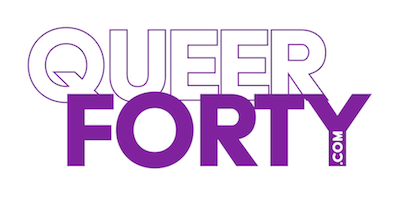Matchmaking makes a comeback and this time it’s queer
For those of us not interested in swiping right or left, matchmaking may offer a good, old-fashioned alternative to finding love.
August 31 is National Matchmaker Day, and to celebrate, we wanted to introduce readers to this time-honored alternative to online dating by grabbing some precious time with LGBTQ matchmaker and H4M Founder Tammy Shaklee.
Tammy is passionate about helping folks over 40 experience a more personal connection when it comes to dating.
Founded in 2012, H4M Matchmaking has helped thousands of gay and lesbian professionals in their search for relationships through a unique offline matchmaking process. The H4M team focuses on traditional introductions, courting, and dating for LGBTQ singles who are interested in achieving a compatible, committed, and sustainable long-term relationship.
Here’s what Tammy told us about the process!
Q40: When it comes to dating, most of us think we have to either use a dating site or meet someone randomly e.g. at a bar. But matchmaking is a third option. Please describe what you see matchmaking.
Tammy: Personal offline matchmaking is introducing two singles who have been thoroughly vetted, and personally interviewed, complete with a background check. The introduction is based on compatibility factors aligned for a potential sustainable long-term committed relationship.
As a tradition, what are its positives and strengths and why might some people have a negative view of it? For example, being set up, blind date, arranged union — these all come to mind as kind of unromantic and lacking the kismet some of us hope for. But what are your views on this?
Tammy: The positives of matchmaking are the time spent by a live human, ideally a certified matchmaker, to vet this potential partner in a wide range of variables and compatibility factors. A matchmaker of course takes into consideration attractiveness, but also equitable eligibility, which may include education, lifestyle, fitness, health and wellness, personality types, goals, careers, family, upbringing, and even trajectory.
How have you updated or modified this tradition at H4M?
Tammy: Modern day singles and LGBTQ singles may or may not want a traditional “marriage with kids” but may be seeking a compatible partner to share life with while also maintaining an active lifestyle, or a more independent lifestyle, or a digital nomad lifestyle, or a bicoastal lifestyle, or even expat lifestyle. We take all of that into consideration. Similarly, some LGBTQ singles are seeking mirroring in a partner, whereas others may seek the opposite.
Has matchmaking worked for you personally or for someone close to you?
Tammy: I met my husband by hiring an offline personal matchmaker, and I never did one minute of online dating. Having been divorced with no kids, I tried organically dating in my new city and in my new career, but I wasn’t meeting the caliber of what I was seeking. So, I continued my search, and matchmakers introduced me to men who were truly vetted and with whom I would have never met organically.
Does the matchmaking process work differently depending on gender, age, race or cultural background?
Tammy: In a way, matchmaking is customized for each individual single. Of course, while there may be a business model and proprietary processes to follow, it is a matchmaker’s goal to introduce the right two compatible partners. We are essentially asking the depth of questions to narrow down key qualities, values, and characteristics with which two quality humans will align and complement each other.
What are some of the criteria and how strictly do you follow them, e.g. if the candidates match in many respects but there are some factors that appear to be obstacles — but you have an instinct that it could work.
Tammy: Ideally, most singles hope for an equitable partner. Equitable does not necessarily mean equals. While most ask for age-appropriate matches, there are some singles who prove age is just a number. A matchmaker can consider a person’s vitality, vibrancy, health, fitness, and wellness. While most hope to meet someone within a reasonable travel distance, so many singles became digital nomads after the pandemic and can live and work from anywhere, so why not open the location boundaries. If one or both parties are open to relocating, why not hear about a single who matches almost all of what you are seeking in compatibility?
Older LGBTQ people are not usually interested in meeting someone onscreen/online unless it’s Facebook and they can chat and observe and get a sense of knowing the person. But having said that, meeting in person with the assumption that you are already meant for each other feels like a lot of pressure. How do you work with that?
Tammy: Since the pandemic, we offer our singles greater options to continue to let us coordinate the details of the first and second date, including selecting locations and reservations, but now we also offer a video virtual (Zoom) happy hour for a first introduction. Our concierge service kicks in to help them “set the stage” in your living room as though you had invited the other person over for a glass of wine. We then offer a “dress rehearsal” with our staff for coaching, best practices, and helping with the lighting and staging for the singles to present their best self on a virtual Zoom hour together. Meeting in person will always be my preference, but virtual introductions have led to multiple initial long-distance relationships, which have led to relocations and weddings. When both candidates have been identified as a potential compatible partner for the other, it should not feel like pressure but almost like meeting a new friend you were meant to meet to then determine whether there is an attraction as well. The matchmaking process should feel like a series of quality introductions with someone you would have not otherwise ever met on your own.
Any success stories you can share?
Tammy: We start measuring success when both singles call in the day after their introduction with a live-feedback call with positive feedback and letting us know they both want a second date, which we manage as well, whether in person or virtual. In the following month, when we call with the next match to learn they are still seeing each other and want to go on hold, we celebrate. One of our favorite couples we introduced during the pandemic, a biracial couple, one Jewish, one ½ African American and ½ Asian, with the age a little off for one, and the distance in California a little off for the other. But both men trusted us and our process. It was the first introduction for one, and a seventh introduction for the other. I recently had the opportunity to sip champagne and tour their new home in Los Angeles. Great men. A great result.






